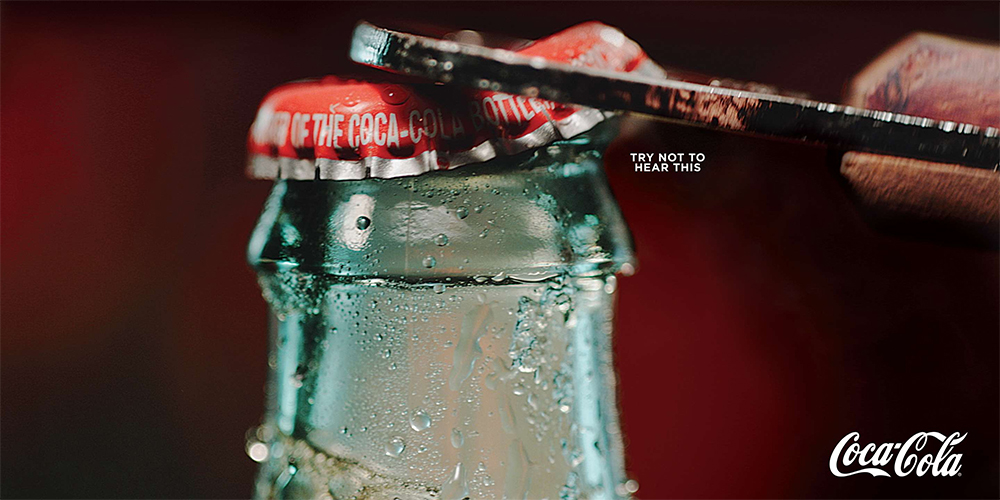
Did you hear it?
Coca-Cola absolutely nailed this campaign, creating a multi-sensory experience in print. And it’s strategically based on what we know to be true about our human brains – the power of reverse psychology, the ability of one sense to trigger another, and the importance of “motion” in capturing our attention, even in still form.
“The beautiful, vibrant close-ups show a can or a bottle of Coca Cola being opened or poured, next to the words ‘try not to hear this’,” explains this article in Print Power. “The slogan acted as a trick of reverse psychology.”
It also tapped a visceral nerve, serving to trigger several senses based on what the reader sees in print.
“We all know that one sense can trigger another – smell can trigger a memory; a song can trigger a craving. Coke is such a powerful brand with such a well-known product. We really wanted to have some fun with the creative and come up with something really fresh” said Juan Javier Peña Plaza, executive creative director at DAVID, the agency behind the campaign.
And the photographs are a perfect example of what Oxford University researcher Charles Spence has called “protein in motion.”
“Spence believes that static images can be just as appealing as videos, as long as this dynamism is applied,” the Print Power article continues. “Photography showing rolling condensation on an icy bottle, and the spray of zest jumping out of the opening can, perfectly capture this phenomenon.”
Just look at these images – you can hear the bottle opening, feel the icy can, maybe even feel the bubbles tickling your nose before you take that first sip. It’s a stunning example of creativity in print, made all the more effective by the so-called “limitations” of the medium.
“We wanted to show that print can be anything. This Coca-Cola ad is a print ad, yes. But it turns your head into a radio – it allows you to hear sounds from an image, mixing two different worlds and bringing them together,” Plaza explains.
It worked beautifully, with 86 million impressions and a slew of online conversations after the fact. When creativity is combined with brain science, remarkable advertising can happen. So while digital fans continue to wait anxiously for smell-a-vision, I’ll take my sensory experiences in print, thanks.
